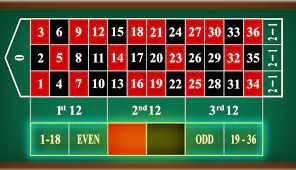The Martingale
The Martingale was famously used by Casanova, the notorious Venetian lover and adventurer. He was well known for taking risks, so it should come as no surprise that he favored this ultra-risky system.
The Martingale was designed so that you could profit a little from a coin flip, but over time you would completely lose. So, for example, if you placed $1 on the banker, and $1 on the player, you would lose $2. If the banker won, you would win $1 ($1 on the banker, and $1 on the player). Your total net win would be $1. You lose, however, $2 ($1 on the banker, and $2 on the player). Your total net loss is $1.
This may not be a problem for Casanova, but you know who wouldn’t want to bet a big amount of money if it worked, right?
The Guarantee
Generally, with these bets you can’t guarantee winning. But you can make a bet so that you will always win money.
To do so, you will need to bet a small amount – say, 10% of your total bankroll. Thus you would bet $11 this time. If you lose, you keep betting $12, $13, $14, $15, and so on until you win. When you win, you bet $15 again, and so on.
How long does it take to lose all of your money?
As you bet one unit, there is a 50% chance you will lose. When you bet $11, there is a 75% chance you will lose. Over time, you will lose. But this system gives you time to bet so that you can make up your loses, or recover from big wins.
Bonus: You can make this system even simpler by having the dealer deal your cards face down, so you bet exactly the amount every time. Of course, if you’re such a stickler you won’t be doing this in a real casino.
The Martingale System – An Even simpler version of the system. Only slightly better than the Martingale, but only slightly worse than any system.
The Fibonacci
The Fibonacci is a simple, elegant way of handling even money – red/black, high/low, or odd/even. Start with a unit of $1. Then bet the $1 on the next two bets, and keep betting the same way. If you win, bet the $2, $3, etc until you lose, and then do it again. If you lose, you have doubles every time. Since betting 1 unit in this system is the same as betting $1, you might as well bet $2, since you’re winning 2 bets for the $1 investment.
The D’Alembert System
The D’Alembert system is even simpler than the Martingale. Here you bet the number “1” (you have 1 unit of your bankroll) and twice the number “2” (you have 2 units of your bankroll). If you win, you break up the $1 into 2 units and bet $2. If you lose, you bet $4, $8, $12, $16, $32, $64, $128, $256, all for a $1 investment.
The Fibonacci
The Dewalive is even simpler than the Martingale. Start with the number 1. Then bet the number 2, 3, 4, 5, 6, etc. until you win. When you win, you continue on with the next number in the list. When you lose, you only go back to 1 and the bet size remains the same. This system is the least complicated, but the fastest.
The Labouchere
The Labouchere is even simpler than the Fibonacci. Start with the number 2. Then bet the number 4, 8, 12, 16, 32, 64, 128, 256, 512, 1024, 2048, 40960, 8192, 16384, down to 10. If you lose, go back to 2 and bet the same. Then bet the same again. This system is the closest to the Martingale, but not as exact. It also offers a relatively good chance of winning.
The Daily Double
This system is even simpler than the Labouchere. Start with the number 2. Then bet the number 4, 8, 12, 16, 32, 64, 128, 256, 512, 1024, and 2040. If you lose, repeat the last step but change the number in the list.
